Ultrasound needle guides for Hitachi transducers
Victor Duran2024-12-03T18:02:36-05:00NEEDLE GUIDES FOR Hitachi (Aloka) TRANSDUCERS
We offer needle guides for most Hitachi ultrasound transducers. The easiest way to find your specific needle guide is to identify your transducer’s model. To see your guide up close type the information into the search bar above or you can look through the list below (in alphabetical order).
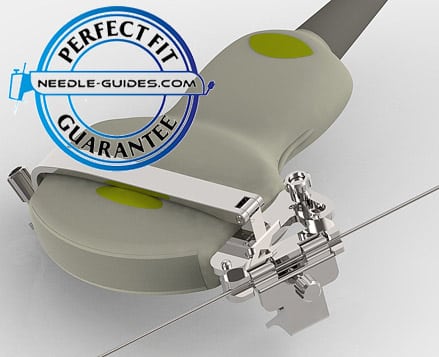
Convex Hitachi (Aloka) ultrasound transducer Needle Guides
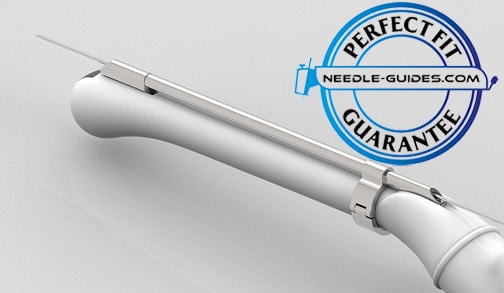
Reusable Transvaginal & Transrectal Hitachi (Aloka) ultrasound transducer Needle Guides
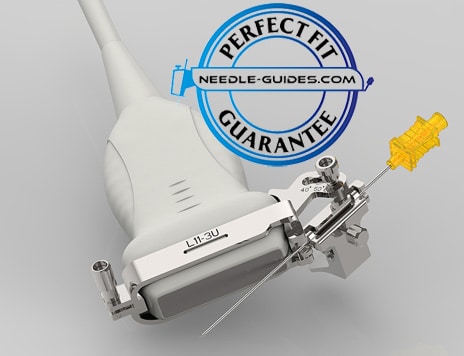
Linear Hitachi (Aloka) ultrasound transducer Needle Guides
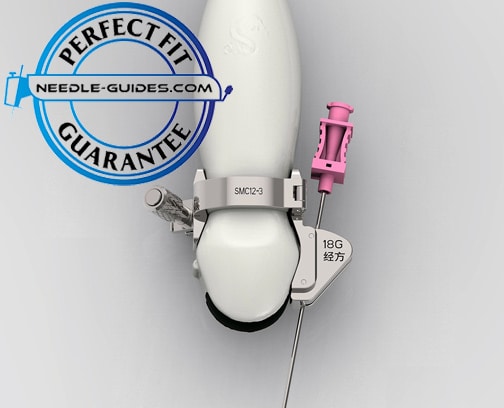
Micro convex Hitachi (Aloka) ultrasound transducer Needle Guides
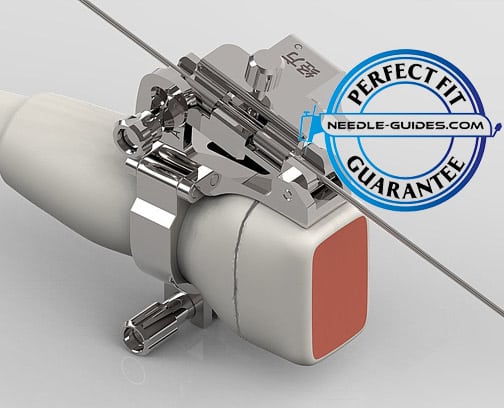
Phased Array Hitachi (Aloka) ultrasound transducer Needle Guides
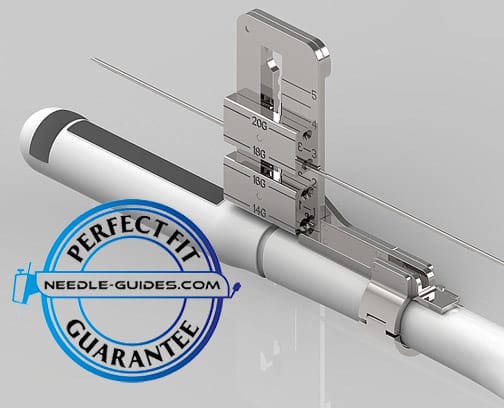
Biplane Transrectal Hitachi ultrasound transducer Needle Guides
| Hitachi (Aloka) C41L47RP Transducer Needle Guide – Reusable | Biplane Transrectal |
| Hitachi (Aloka) EUP-CC531s Transducer Needle Guide – Reusable | Biplane Transrectal |
| Hitachi (Aloka) EUP-U533 Transducer Needle Guide – Reusable | Biplane Transrectal |
| Hitachi (Aloka) UST-672-5/7.5 Transducer Needle Guide – Reusable | Biplane Transrectal |
| Hitachi (Aloka) UST-678 Transducer Needle Guide – Reusable | Biplane Transrectal |
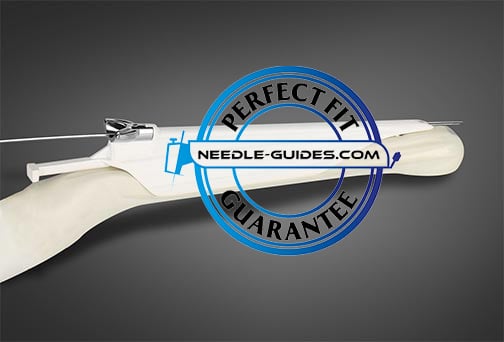
Disposable Hitachi ultrasound transducer Needle Guides
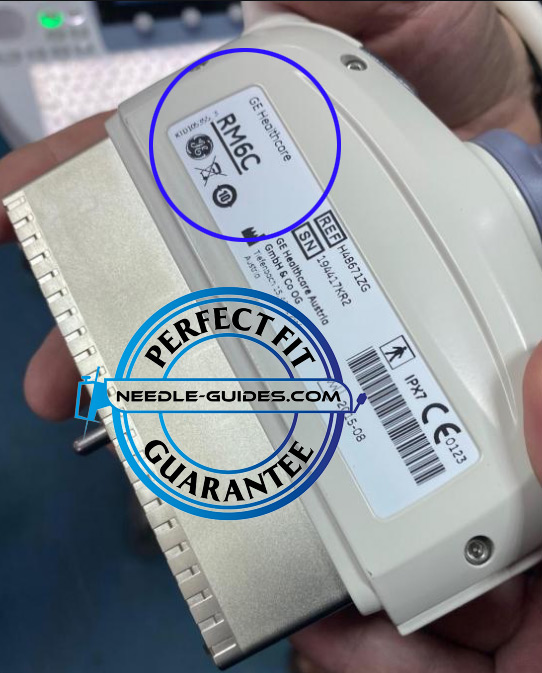
Can't find your Hitachi (Aloka) ultrasound needle guide? We can help!
Ultrasound Needle Guide Quotation request
"*" indicates required fields



ULTRASOUND NEEDLE GUIDES FOR ENDOCAVITY HITACHI (ALOKA) PROBES
A needle guide mounted on your Hitachi (Aloka) endocavity transducer is commonly used for ultrasound-guided procedures that involve accessing organs or structures through body cavities. Specifically, the endocavity transducer is specifically designed for imaging within body cavities, such as the rectum, vagina, or esophagus, and provides high-resolution images in close proximity to the target area. Correspondingly, a needle guide attached to an endocavity transducer, facilitates accurate needle placement and enhances procedural guidance for various medical purposes, including:
Transrectal prostate procedures: A needle guide seated on top of your Hitachi (Aloka) endocavity transducer assists in accurately targeting the prostate gland in procedures such as prostate biopsies or brachytherapy. In this situation, it helps guide the biopsy needle or the radioactive seeds to the desired locations within the prostate, ensuring precise sampling or treatment delivery.
Transvaginal interventions: A needle guide used with your Hitachi (Aloka) endocavity transducer can be used for interventions such as cyst aspirations or uterine fibroid ablations in gynecological procedures. For this purpose, the needle guide allows for precise needle placement in therapeutic interventions targeting cysts or fibroids within the vagina or uterus.
Endorectal interventions: A needle guide on your Hitachi (Aloka) endocavity transducer can be utilized for interventions such as biopsies or abscess drainages in procedures involving the rectum or anal canal. Specifically, it helps guide the needle to the target area within the rectum, facilitating accurate sampling or drainage procedures.
Endoscopic ultrasound-guided interventions: A needle guide mounted on your Hitachi (Aloka)endocavity transducer can be used for precise fine-needle aspirations or injections in endoscopic procedures. In this case, it provides real-time visualization and precise needle guidance for sampling or therapeutic interventions within the gastrointestinal tract, such as the esophagus, stomach, or rectum.
In summary, a needle guide fitted on your Hitachi (Aloka) an endocavity transducer enables accurate and real-time visualization during procedures within body cavities. It improves the safety, accuracy, and success rates of needle placements, reducing the risk of complications and improving patient outcomes.

ULTRASOUND NEEDLE GUIDES FOR LINEAR HITACHI (ALOKA) PROBES
A needle guide mounted on your Hitachi (Aloka) linear transducer is commonly used for ultrasound-guided procedures that require a linear imaging format. Specifically, the linear transducer has a rectangular or linear shape, providing a high-resolution image in a narrow field of view. Correspondingly, the needle guide, in combination with the linear transducer, facilitates accurate needle placement and enhances procedural guidance for various medical purposes, including:
Musculoskeletal interventions: A needle guide used in conjunction with your Hitachi (Aloka) linear transducer is often used for ultrasound-guided injections and aspirations in musculoskeletal procedures. For this purpose, it assists in precisely targeting joints, bursae, tendons, and muscles, allowing for accurate delivery of medications, such as corticosteroids or local anesthetics, or for aspiration of fluid or cysts.
Interventional radiology: A needle guide on your Hitachi (Aloka) linear transducer can be utilized for biopsies, abscess drainages, or tumor ablations in interventional radiology procedures. With this in mind, it helps guide the needle to the desired target within the liver, kidneys, breast, thyroid, or other superficial or deep-seated structures, ensuring accurate placement and minimizing the risk of complications.
Vascular procedures: A needle guide used with your Hitachi (Aloka) linear transducer assists in identifying and accessing the blood vessel with precision during vascular access procedures, such as ultrasound-guided arterial or venous catheterizations. Therefore, this allows for safer and more effective catheter insertions, reducing the risk of complications like arterial puncture or hematoma formation.
Regional anesthesia and pain management: A needle guide attached on your Hitachi (Aloka) linear transducer can aid in accurately targeting specific nerves or nerve clusters for nerve blocks or pain management procedures. For this reason, this enables the anesthesiologist to deliver local anesthetic agents precisely, resulting in effective pain relief or anesthesia for surgeries.
In summary, the use of a needle guide fitted your Hitachi (Aloka) linear transducer enhances visualization and improves the accuracy of needle placement, increasing procedural success rates and patient safety.

ULTRASOUND NEEDLE GUIDES FOR PHASED ARRAY HITACHI (ALOKA) PROBES
A needle guide mounted on your Hitachi (Aloka) phased array transducer can be used for ultrasound-guided procedures that require imaging with a phased array technology. Specifically, the phased array transducer uses multiple small elements to generate and steer ultrasound beams electronically, allowing for real-time imaging of a wide field of view. Correspondingly, the needle guide, in combination with the phased array transducer, facilitates accurate needle placement and enhances procedural guidance for various medical purposes, including:
Cardiac procedures: A needle guide used with your Hitachi (Aloka) phased array transducer can aid in procedures such as pericardiocentesis or myocardial biopsies in cardiac interventions. For this purpose, it helps guide the needle accurately to the target area within the heart, allowing for precise sampling or fluid drainage.
Transcranial Doppler (TCD): During TCD examinations, a needle guide fitted on your Hitachi (Aloka) phased array transducer can be utilized for procedures such as transcranial Doppler monitoring or embolism detection. In this situation, it assists in accurately positioning the transducer to obtain optimal ultrasound signals through the skull, enhancing the accuracy and reliability of the diagnostic measurements.
Transesophageal echocardiography (TEE): For TEE procedures, a needle guide on your Hitachi (Aloka) phased array transducer can aid in transseptal punctures or interventions within the heart. In particular, it provides guidance for accurate needle placement through the interatrial septum or imaging guidance during intracardiac procedures.
Abdominal and pelvic interventions: A needle guide on your Hitachi (Aloka) phased array transducer can assist in interventions such as biopsies, fluid aspirations, or drainages in certain abdominal or pelvic procedures. With this in mind, it enables accurate needle placement while providing a wide field of view for visualizing the target organ or structure.
In summary, the use of a needle guide fitted on your Hitachi (Aloka) phased array transducer allows for real-time imaging and precise needle guidance in various medical procedures. It enhances procedural accuracy, improves visualization, and contributes to better patient outcomes.
Still can’t find it? If you do not see the exact needle guide for your Hitachi (Aloka) transducer, please contact us with the model of your transducer and we will get back to you via phone or email.
